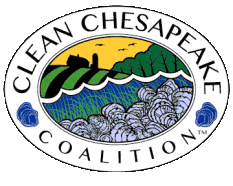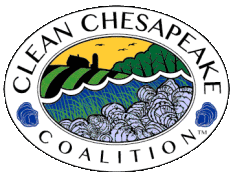History of the Coalition

Following the release of its local Watershed Implementation Plan (WIP) and in consideration of the fiscal implications for local taxpayers, the Dorchester County Council initiated outreach to county governments across Maryland. The purpose of this effort was to foster coordination among counties in examining the public costs, effectiveness, and practical implementation of the policies, programs, and practices being advanced by state and federal agencies to restore the Chesapeake Bay.
This initial collaboration, first informally referred to as the “WIP Coalition” and later the “TMDL (Total Maximum Daily Loads) Coalition,” ultimately evolved into the Clean Chesapeake Coalition. In late 2012, seven Maryland counties formally agreed to work together to advance Chesapeake Bay water-quality improvements in a manner that is both environmentally effective and fiscally responsible.
New Priorities
Maryland’s Phase III Watershed Implementation Plan (WIP) reflects an acknowledgment of the practical challenges encountered under Phase II, and the CCC submitted comments recognize and welcome this more collaborative and adaptive approach.
The Phase III WIP identifies the owner of the Conowingo Dam, Exelon/Constellation, as one of the entities with responsibility for addressing pollution that has accumulated in the reservoir and is mobilized into the Upper Chesapeake Bay during extreme weather events, when spill gates are opened and sediment scouring occurs.
At the regional level, EPA oversight of Pennsylvania’s Phase III WIP has raised concerns among downstream states and non-governmental organizations, widely characterized as falling short on nitrogen reductions, facing funding constraints, and lacking alignment with county-level implementation efforts. Given Pennsylvania’s significant contribution to overall Chesapeake Bay pollution loads, the adequacy of its commitments remains an important consideration for the protection of downstream investments and restoration progress in Maryland..
With EPA’s approval of the Phase III WIPs, attention now turns to development of the Conowingo WIP. It is essential that this plan include concrete and effective measures to address the “Conowingo factor,” including sediment management strategies and the removal of accumulated sediments in the reservoir to help restore its trapping capacity.
Under the Phase III framework, each jurisdiction established goals based on a midpoint assessment of progress and scientific analysis of water-quality and related data, with implementation actions scheduled for the 2019–2025 period. As part of this process, the Maryland Department of the Environment has called for the creation of a new jurisdiction focused specifically on the Conowingo Dam and its surrounding area.
The Coalition’s Overall Objective
The overall objective of the Clean Chesapeake Coalition is to pursue improvement to the water quality of the Chesapeake Bay in the most prudent and fiscally responsible manner. We believe that this collective purpose is consistent with the responsibilities of Maryland citizens and reflective of the feelings of most local elected officials.
Please see Our Mission to further understand the CCC’s current priorities.
Our research, analysis and advocacy thus far is of great use and benefit to everyone concerned with a healthy Bay. There is no doubt that we have raised attention in the flaws of the Bay clean-up agenda and the disproportionate fiscal impacts on Maryland local governments (read taxpayers).
There is sufficient momentum now it seems for Marylanders to embrace the cause; support the Coalition and know that your tax dollars will be spent wisely.
